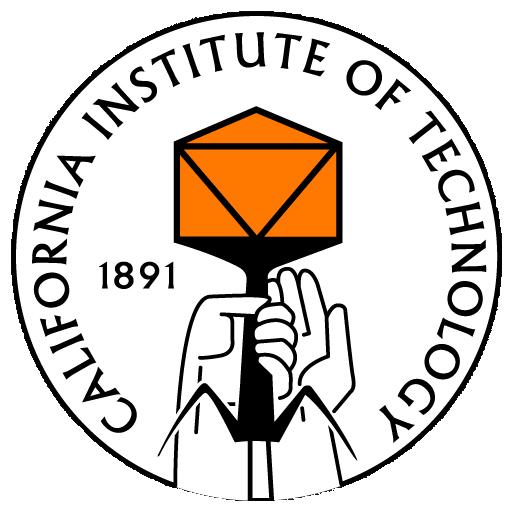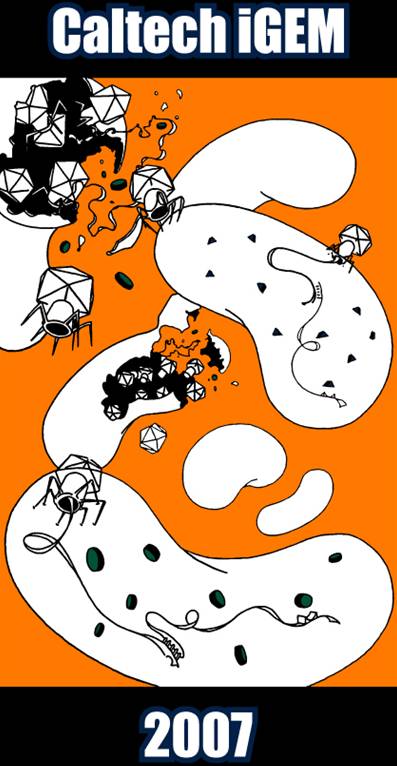Caltech
From 2007.igem.org
| Line 10: | Line 10: | ||
|style="background:#ffffff"| | |style="background:#ffffff"| | ||
| - | + | ==<center>Our Project</center>== | |
| + | |||
| + | |||
| + | [[Image:Caltech_igem_2007.jpg|right|250px]]The Caltech iGEM 2007 team is composed of four undergraduates from Caltech and one undergraduate from MIT. Team members are current juniors and seniors in biology, chemistry, chemical engineering, and biological engineering. The team was advised by three graduate students and three faculty mentors. | ||
| + | |||
| + | <b>Our project attacks the following problem: can one engineer viruses to selectively kill or modify specific subpopulations of target cells, based on their RNA or protein expression profiles?</b> This addresses an important issue in gene therapy, where viruses engineered for fine target discrimination would selectively kill only those cells over- or under-expressing specific disease or cancer associated genes. An even more ambitious goal would be to <i>rewire</i> target cells, by integrating a small gene cassette which would modify the target cell's expression profile, possibly fixing a disease state. | ||
| + | |||
| + | This is clearly an ambitious goal, so we brainstormed a simple model of this problem suitable for undergraduates working over a summer. The bacteriophage λ is a classic, well studied virus capable of infecting E. coli, another classic model genetic sytem. We therefore seek to engineer a λ strain targeted to lyse specific subpopulations of ''E. coli'' based on their transcriptional profiles. Together, λ and E. coli provide a tractable genetic model for this larger problem, while hopefully providing lessons applicable to more ambitious, future projects. | ||
| + | |||
| + | Briefly, our project relies on controlling key viral developmental processes in a target-cell specific manner. In our design, the engineered viruses are capable of entering all cells. The viruses are engineered to lack the native copy of a key developmental gene, while containing a second, regulated, copy which is only expressed when the virus infects specific target cells. Thus, viruses infecting non-target cells stall early in their development and are quickly destroyed by the host. Viruses infecting target cells, however, manage to express these essential genes and successfully complete their infection cycle. | ||
| + | |||
| + | As an initial mechanism to target viruses to specific cell types, we will place the viral developmental genes under riboregulator control. Viral mRNAs for the regulated developmental genes will express with a stem loop sequestering ribosome binding sites, preventing translation. Specific mRNA in target E. coli will invade the stem loop, freeing the ribosome binding site and allowing proper translation. We believe this approach is more general than methods which might target specific cell-surface markers. Furthermore, if this method works, it would be possible in principle to extend viral mRNA regulation using aptamers capable of recognizing subtle signals such as post-translational modification. | ||
| + | |||
| + | We selected the viral developmental genes <i>N, Q,</i> and <i>cro</i> as promising targets for regulation. <i>N</i> and <i>Q</i> are <i>antiterminators</i> required for λ to transcribe its full set of genes. Viruses lacking these genes stall at extremely early developmental stages and are completely inviable, barely producing any viral mRNA. <i>cro</i> biases bias the virus' decision to either | ||
| + | lyse a target cell or integrate into its DNA. This makes it an attractive candidate to investigate the rewiring goals explored above. | ||
| + | |||
| + | Choosing an appropriate λ strain poses a challenge. Existing strains with defective <i>N, Q,</i> and <i>cro</i> genes lack unique restriction sites to clone our constructs into. Therefore, we will utilize recombineering to introduce introduce these mutations into phages specifically designed to accept cloning inserts. | ||
| + | |||
| + | [[Image:Caltech_2007_overview.gif|center]] | ||
| + | |||
| + | ==<center>About iGEM</center>== | ||
| + | |||
| + | Synthetic biology implies the modification of existing biological pathways or construction of new systems to perform useful tasks, as well as the development of foundational technologies to allow for the more reliable design of biological systems. Many major problems in the field stem from the perceived unreliable and variable nature of complex biological systems. Most biological systems exhibit inherent variations in system behavior. These variations, along with the current lack of understanding around organizing principles in biological systems, limit the ability to engineer reliable biological systems. If foundational technologies can be developed that allow for standardization, decoupling, and abstraction, synthetic biology will expand to an engineering discipline that will advance applications in many fields. If successful, engineers could design and construct new systems in relatively short periods of time using well-characterized parts (Endy 2005). | ||
| + | |||
| + | The International Genetically Engineered Machine (iGEM) competition involves the design and implementation of a synthetic biological system. Construction requires modifying existing components and combining a library of known parts in new ways to construct a novel system. The project has two goals: firstly to create an interesting device for iGEM, and secondly to determine the viability of using standardized parts. The Caltech iGEM project focuses on using the viral lysis/lysogeny switch to have viruses kill selective host cells, with the viral decision resting on whether the host produces a correct riboregulator key. | ||
|} | |} | ||
| - | |||
Revision as of 22:25, 26 October 2007
iGEM 2007
Home
Highlights
Project
People
Protocols
The Caltech iGEM 2007 team is composed of four undergraduates from Caltech and one undergraduate from MIT. Team members are current juniors and seniors in biology, chemistry, chemical engineering, and biological engineering. The team was advised by three graduate students and three faculty mentors.
|

